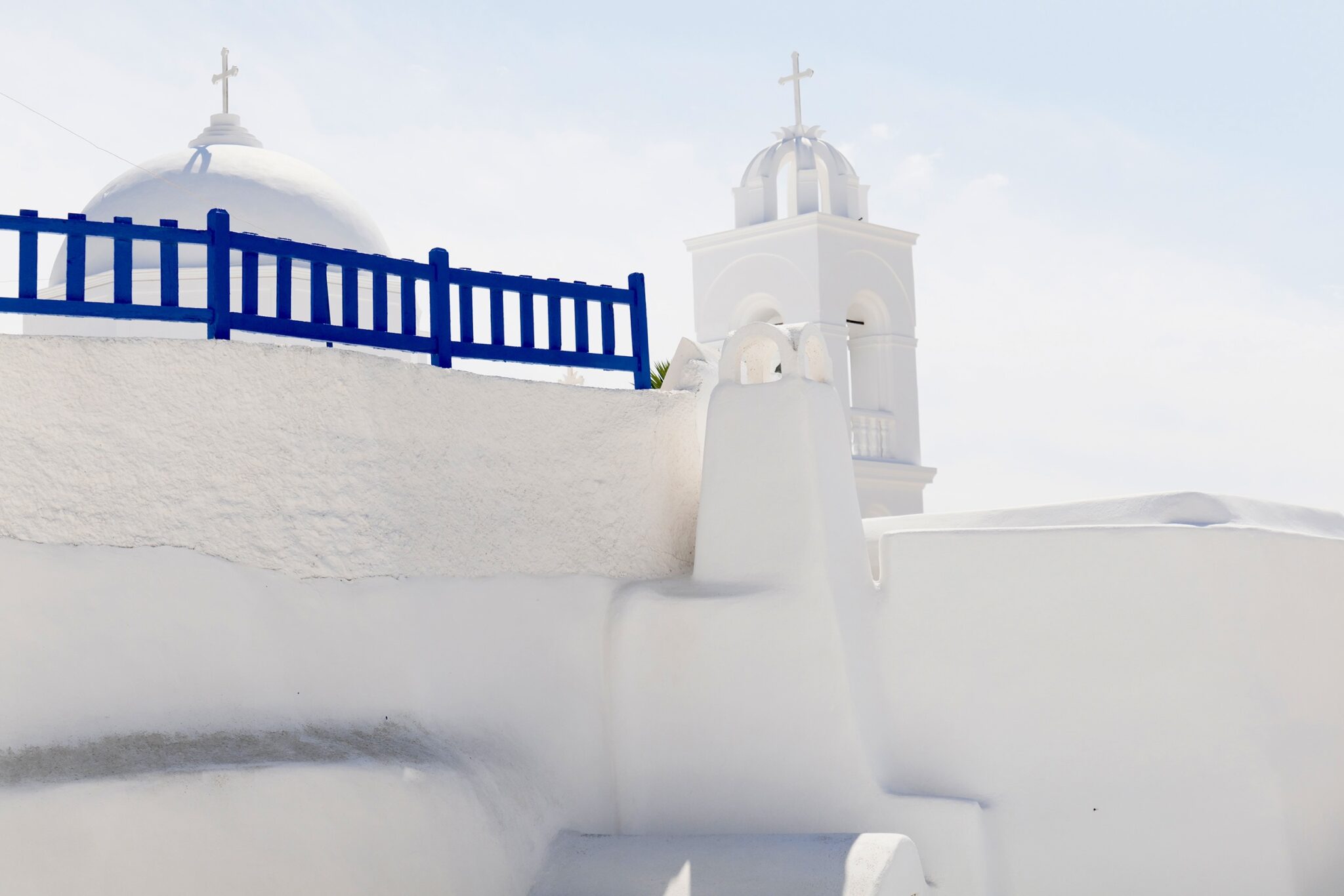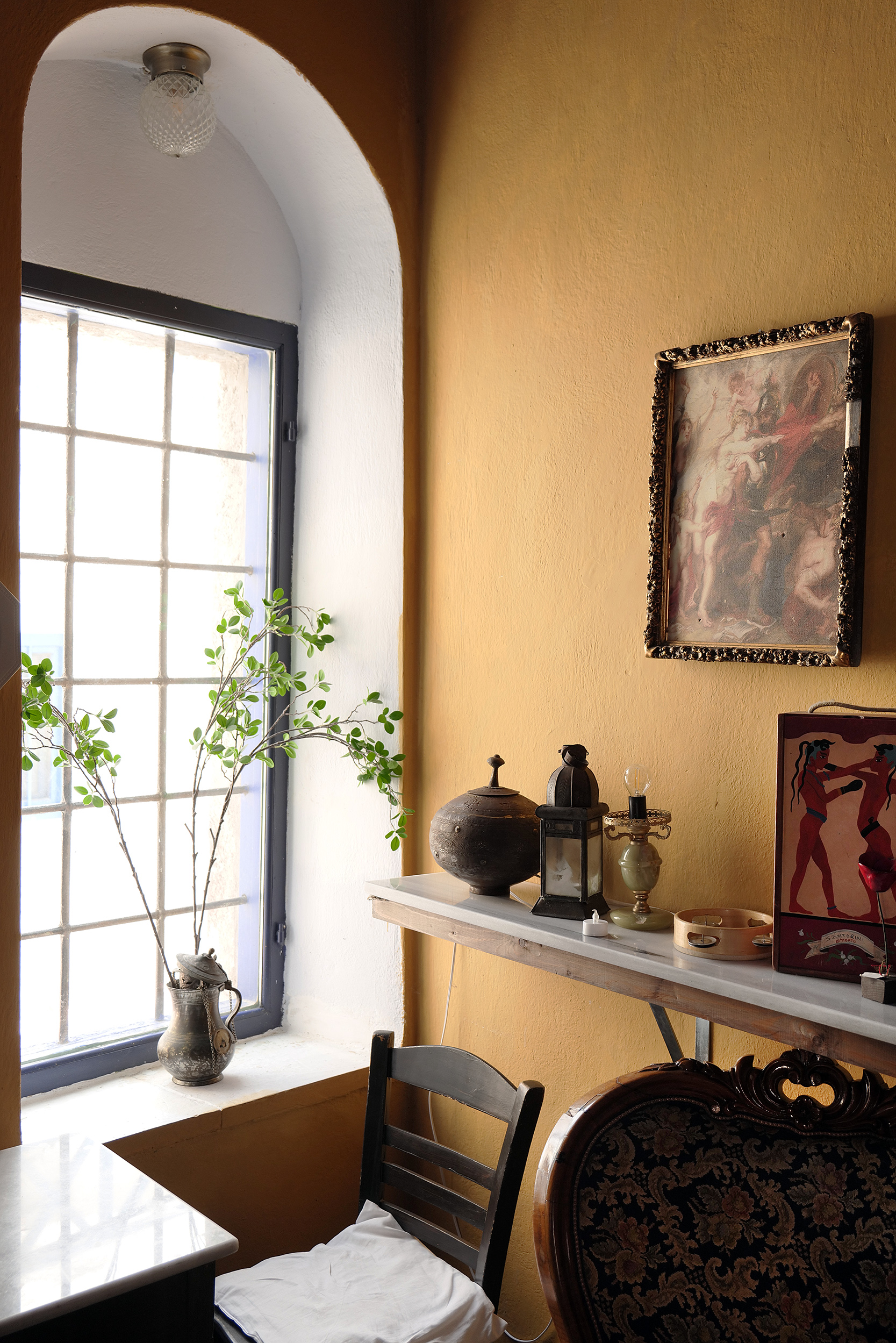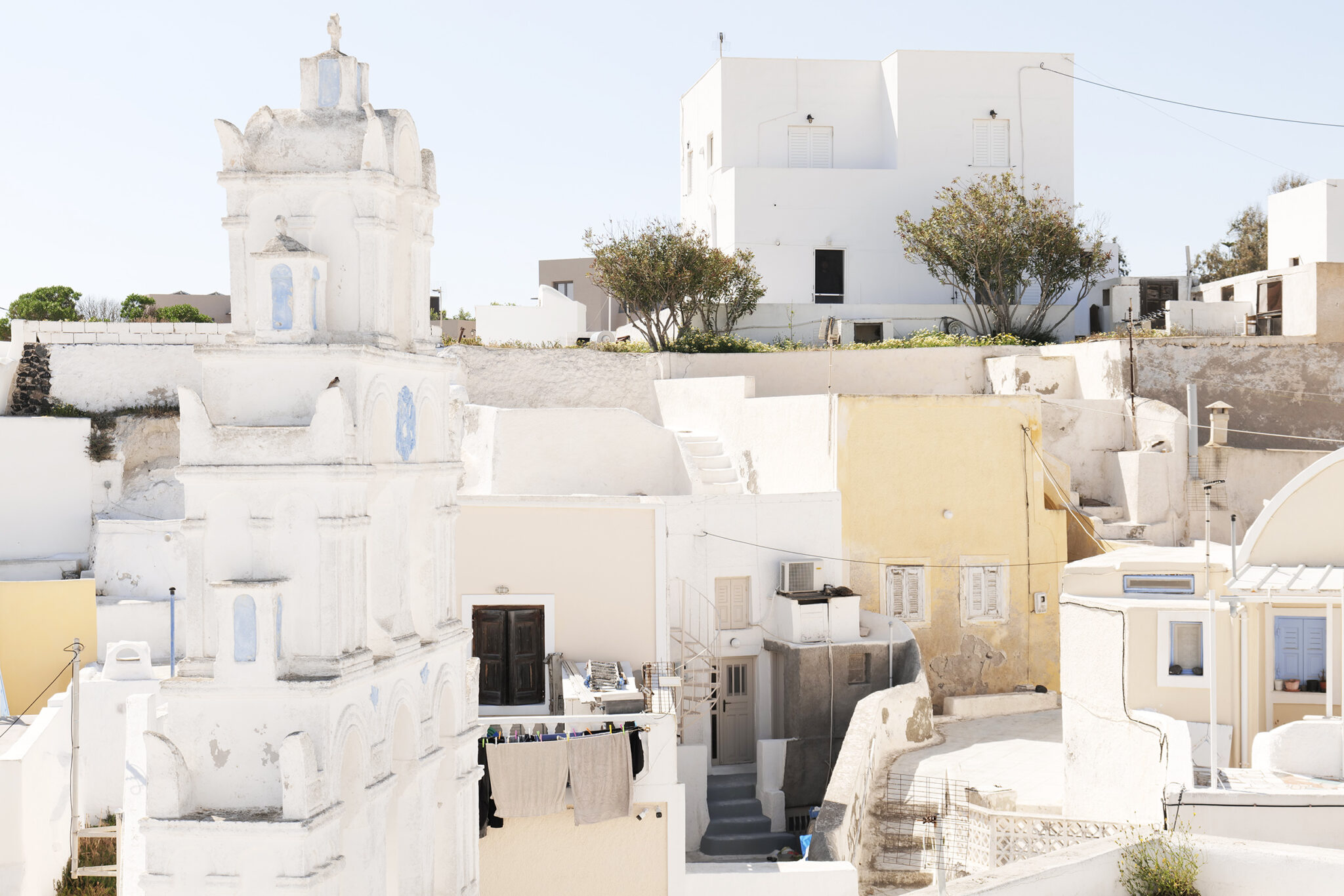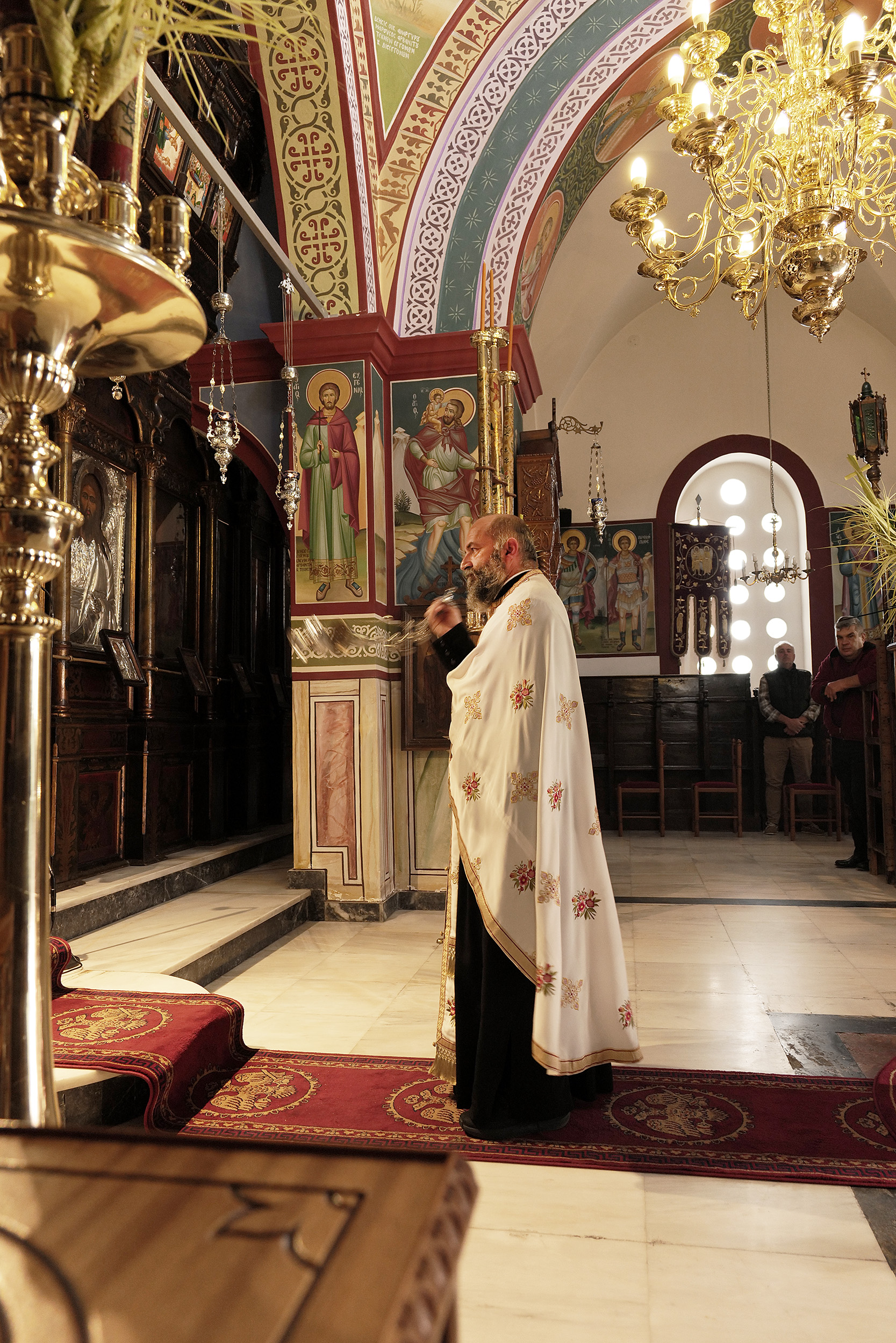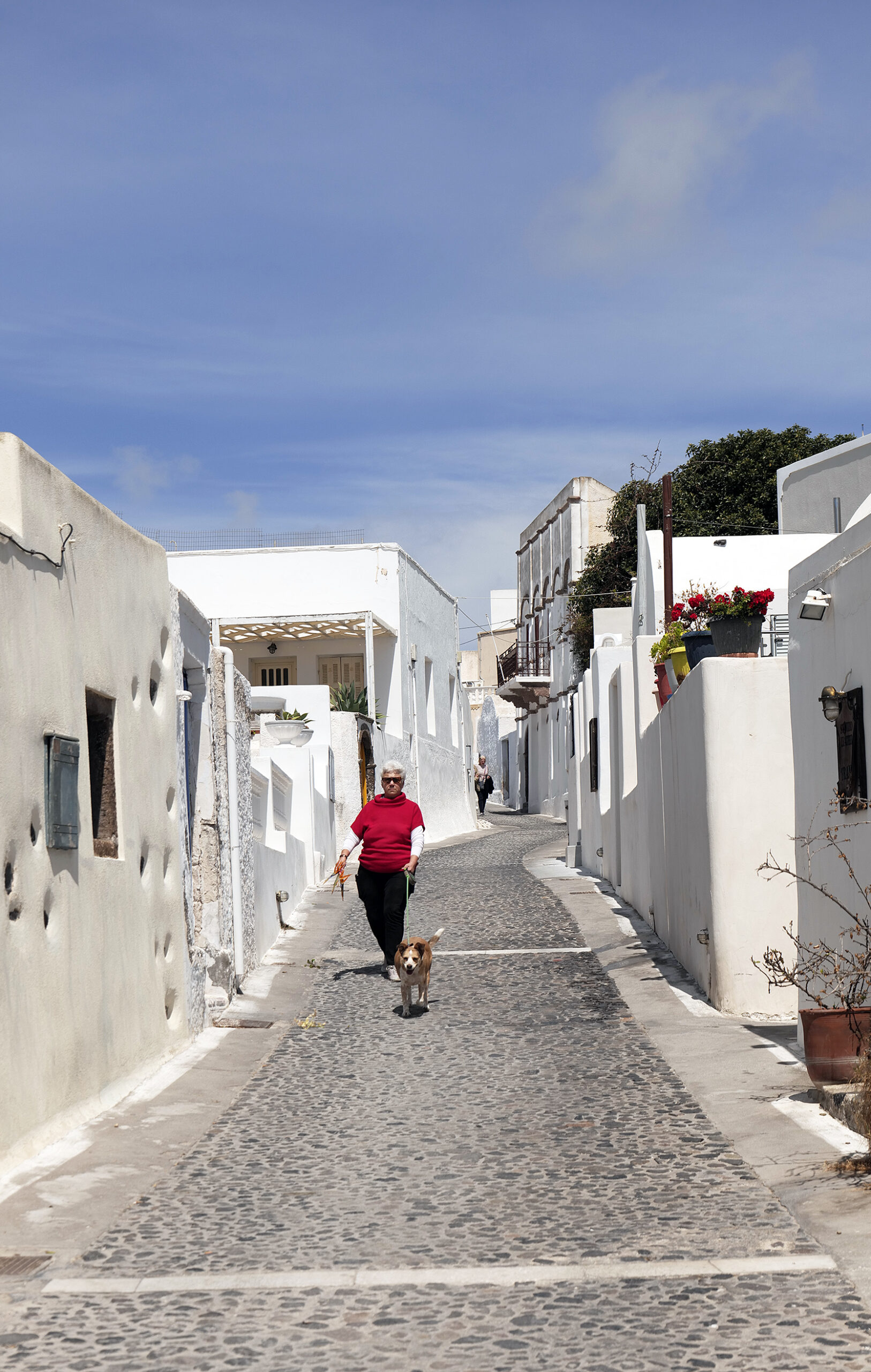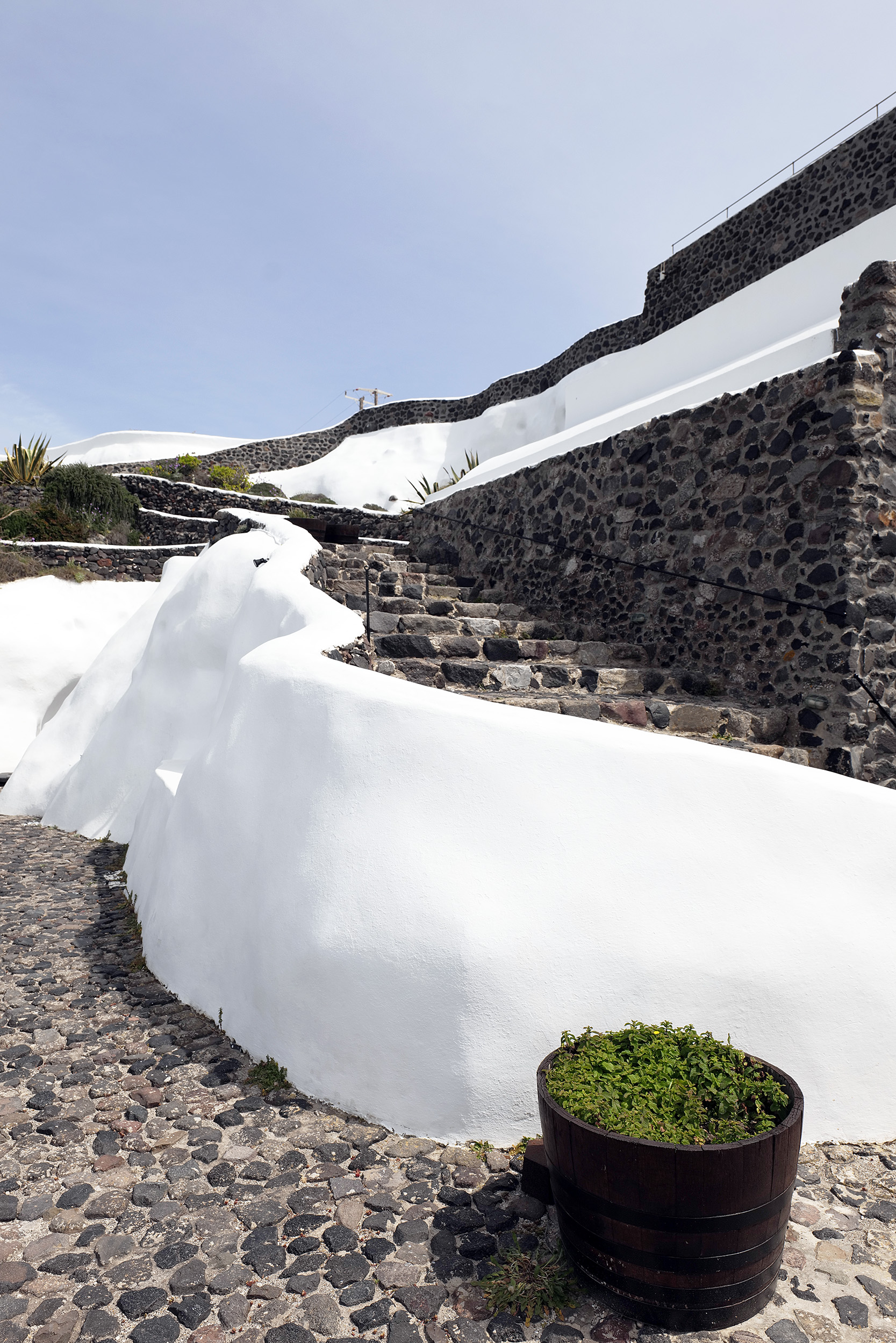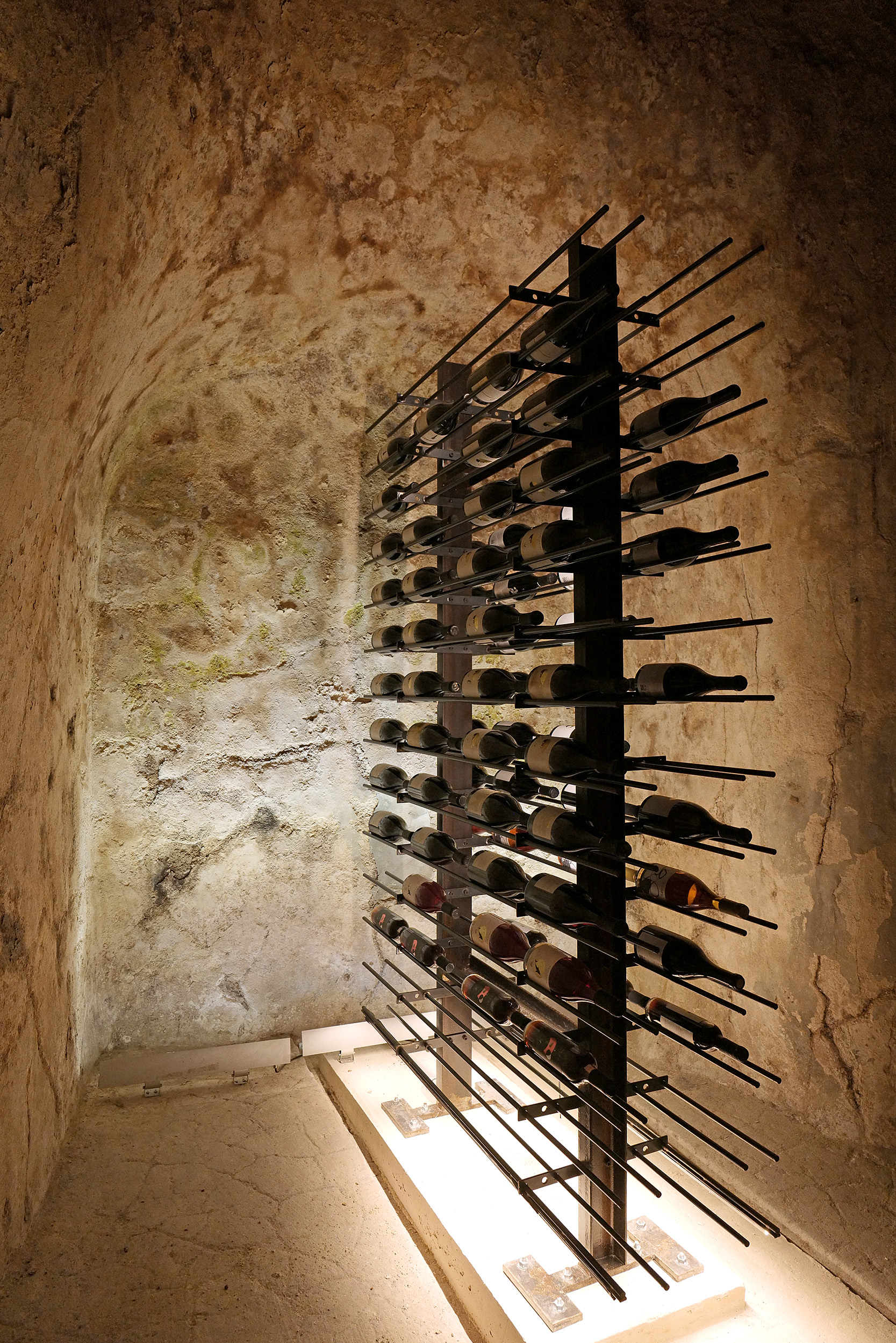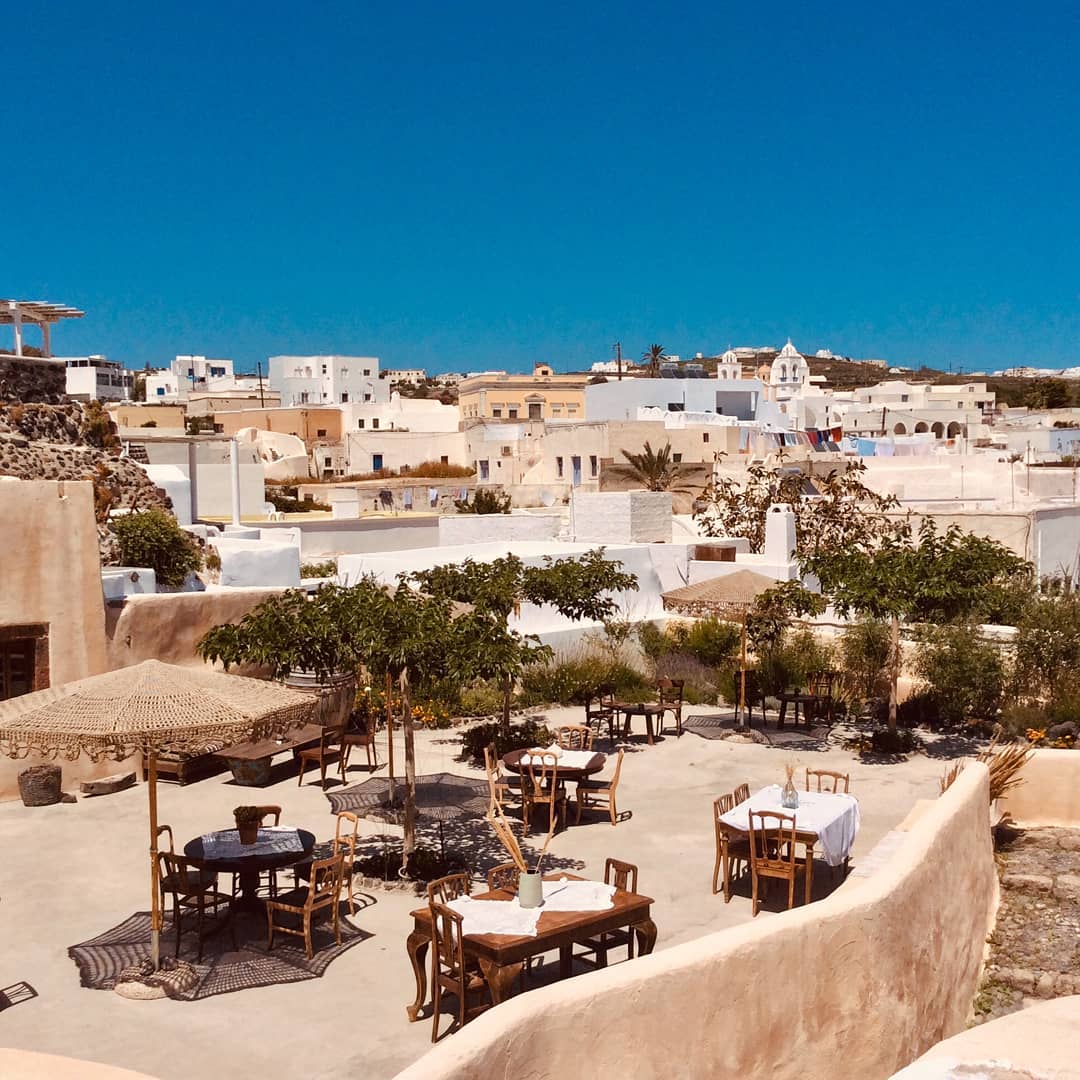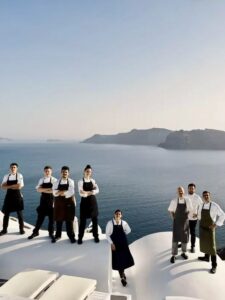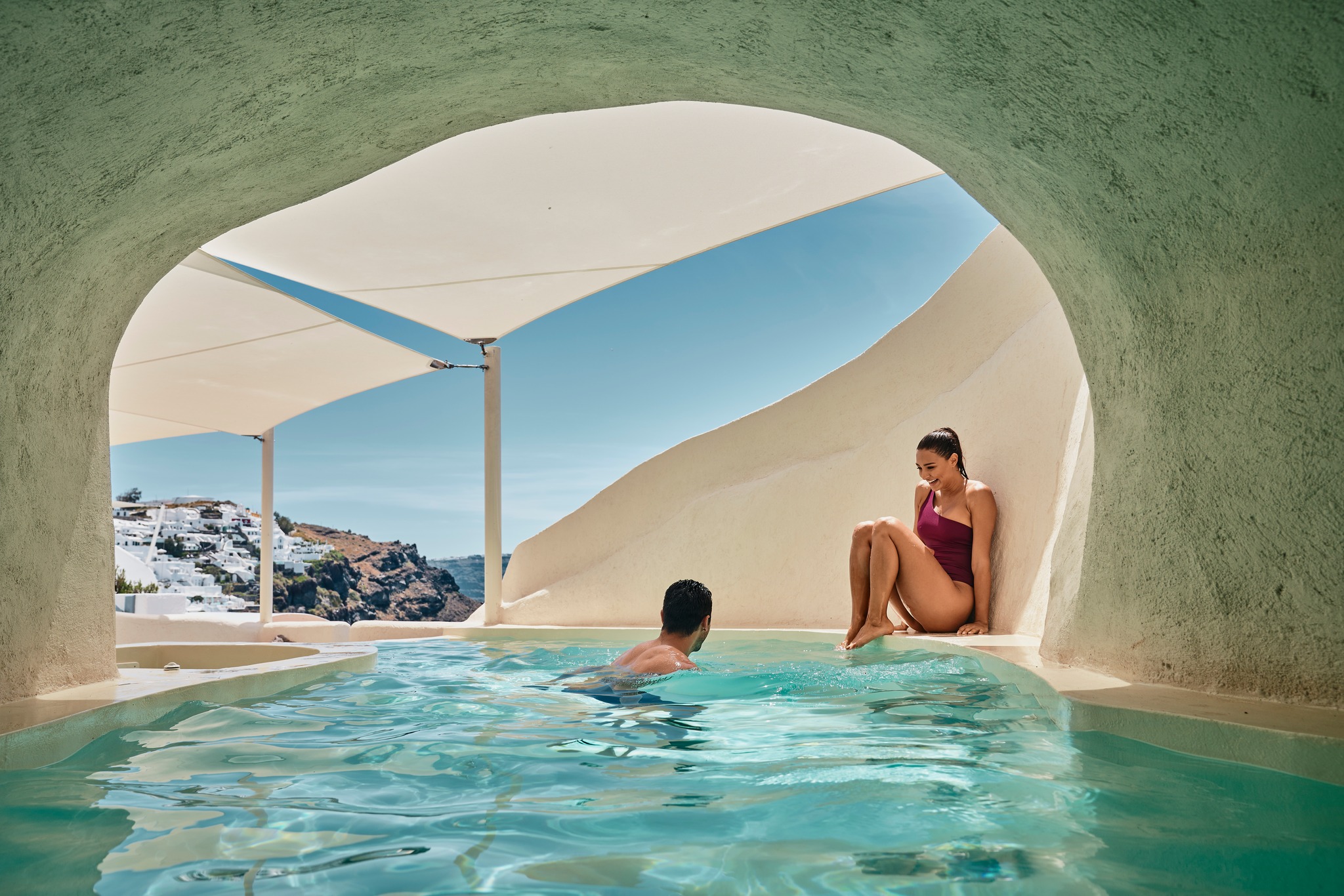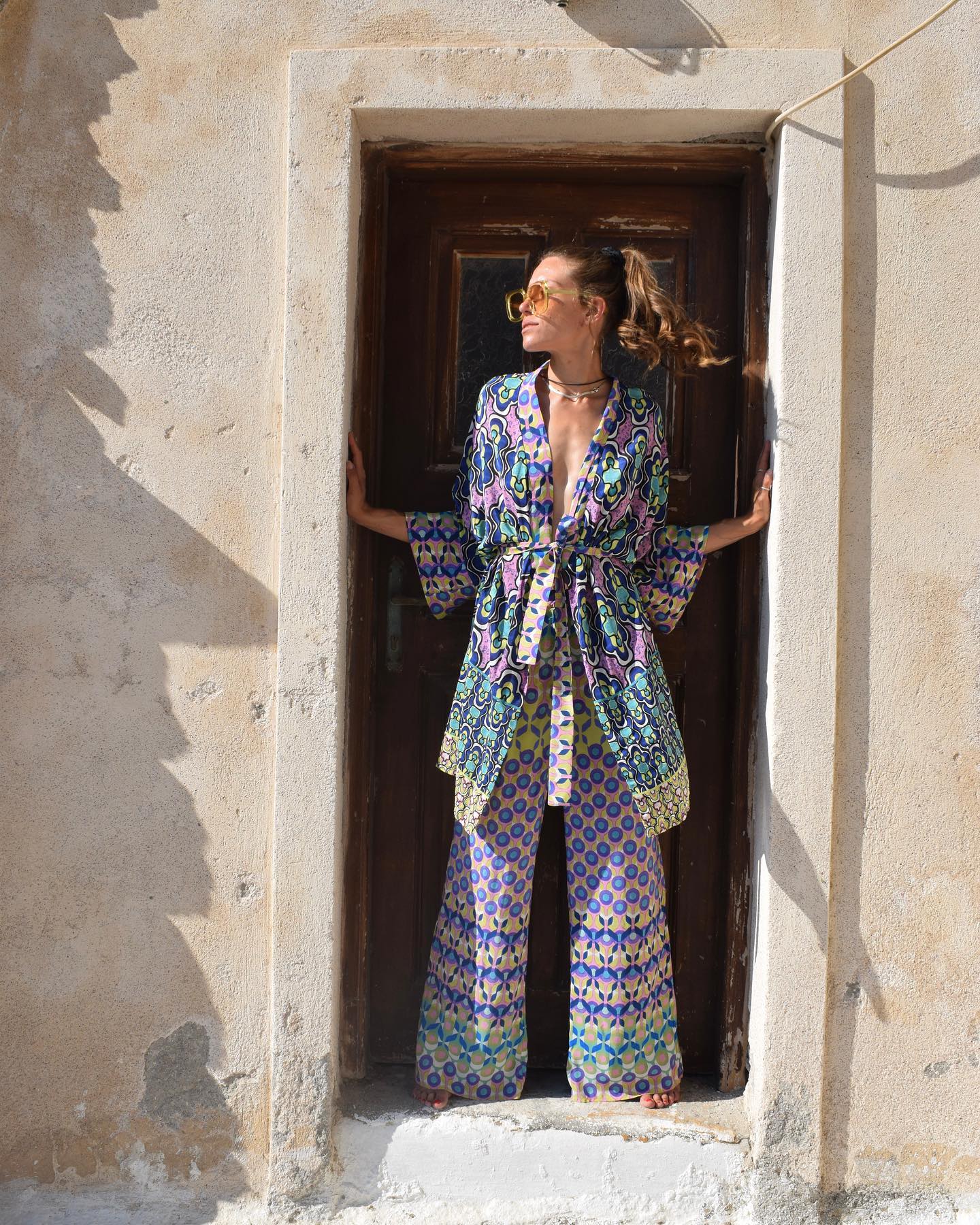There’s an aura of mystery, hinting that you’ve stumbled upon one of those rare villages that, although located on superstar tourist islands, remain raw, hidden gems. Leaving the car at the parking lot near the entrance of Megalochori, a road that gently descending toward the village center naturally draws you in.
This authenticity is found just nine kilometers from cosmopolitan Fira. Megalochori is a village defined by its elaborate bell towers that create uniquely cinematic frames: children playing ball beneath them, others gliding downhill on skateboards, couples strolling hand-in-hand through romantic settings, locals casually going about their day under whitewashed bell-topped arches. It’s also home to two renowned wineries, an innovative cultural center, and relaxed rhythms exemplified by its iconic traditional café, where everyone becomes part of one group, sipping Santorini ouzo, sampling freshly cooked handmade meze, and learning firsthand from residents about local happenings.
On one hand, you want to keep this discovery to yourself, feeling a sacred obligation to protect its charm from hordes of tourists. On the other, you’re eager to announce that even the world-famous Santorini still has authentic corners—a breath of genuine life amidst infinity pools with admittedly stunning views and trendy cafés.
A Gathering Spot for All
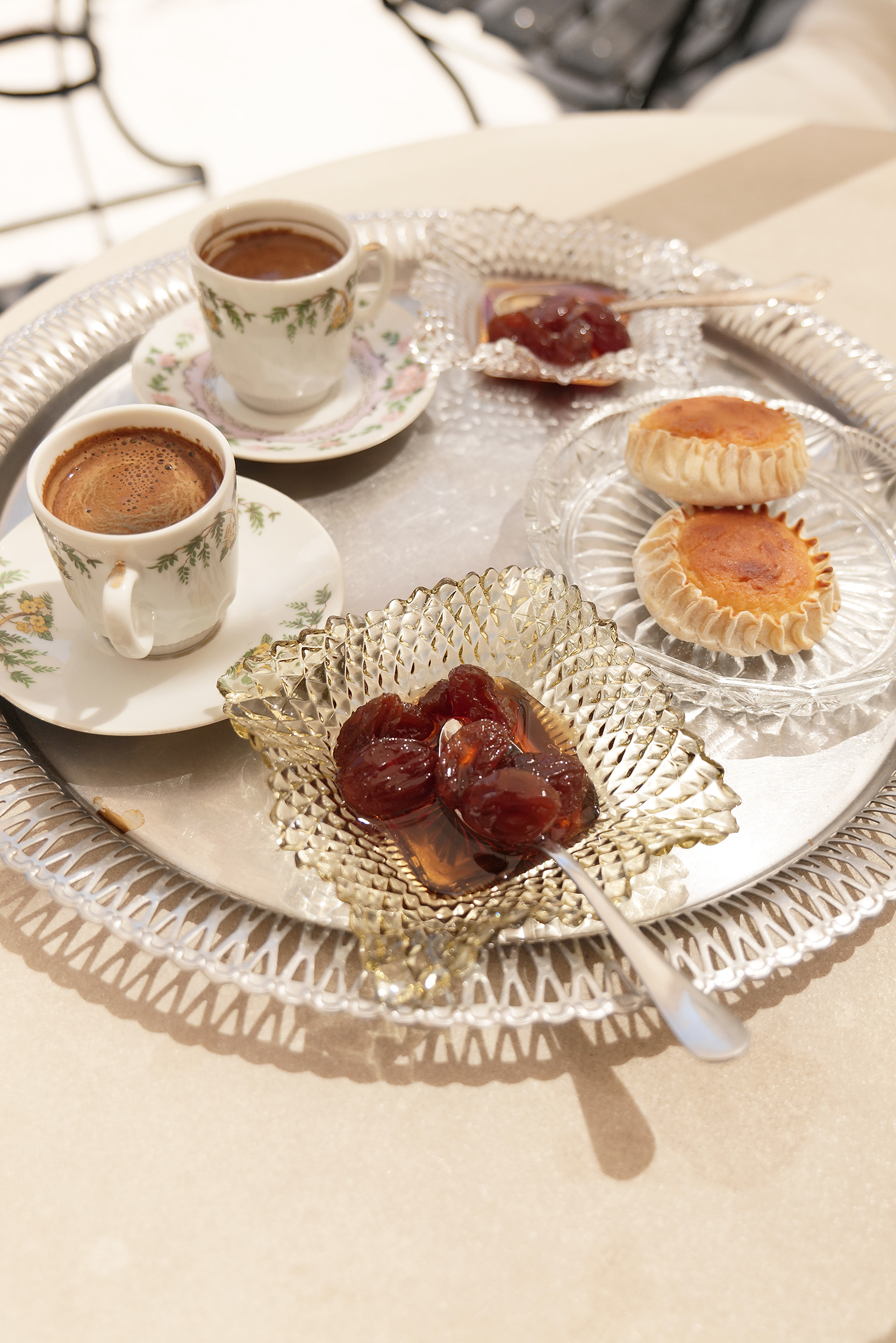

On our spring journey to Santorini, our first stop was the Paradosiako (traditional) Café of Megalochori. With its pebbled courtyard, mismatched tables, colorful cushions, outgoing hostess Magda at the entrance accompanied by her loyal dog Sa and white cat Beethoven, this spot immediately signals you’re in a welcoming, timeless village. Although this café, now central to Megalochori’s social life, opened only a few years ago, it already feels brimming with stories from the past. Maybe it’s the heirloom furniture from Veria, brought here by smiling Magda, or perhaps it’s the furnishings donated by villagers when her initial plan for a women’s accessories shop turned into a café.
Perhaps it’s Magda’s own journey—her studies in psychology in Ioannina, Epirus and costume design and scenography at Vakalo School, followed by her decision in 2014 to leave her hometown and Athens permanently for the island that had captured her heart since her first visit in 1993. Or maybe it’s the stories shared by locals and visitors on summer nights, gathered around a vivid red piano brought out to fill the whitewashed alleyways with melodies.
These days, a frequent conversation topic is the recent seismic activity. Magda’s disarming reply is characteristic: pointing at glasses and plates balanced precariously in an antique cabinet, she firmly states, “Not one fell or broke.” Locals quickly add, “There was no damage to any homes,” eager to set things straight. They admit the phenomenon was unusual in intensity and frequency but stress they never felt the panic portrayed by the media. “Some initially slept in cars or front rooms, but few left Megalochori,” they say, proudly indicating reinforced early-20th-century homes that survived even the great 1956 earthquake. Indeed, everything around us speaks of normalcy—not a return to it, as the locals’ routines were barely disturbed.
Fresh mezes continually flow from the kitchen alongside Santorini’s microbrew beers and locally distilled ouzo. On the marble counter atop yet another antique wooden cabinet from Veria, trays arrive filled with tomato fritters, creamy fava, sizzling meatballs, hearty mushroom soup, savory slow-cooked pork, and buttery xinochondros (cracked wheat soup) directly from Crete. All dishes come from Magda’s welcoming hands—with help from two additional girls in summer—who readily joins your table, reminding you to save room for delectable grape spoon sweets and Mrs. Margarita’s traditional melitinia pastries from a neighboring village.
Stunning Bell Towers
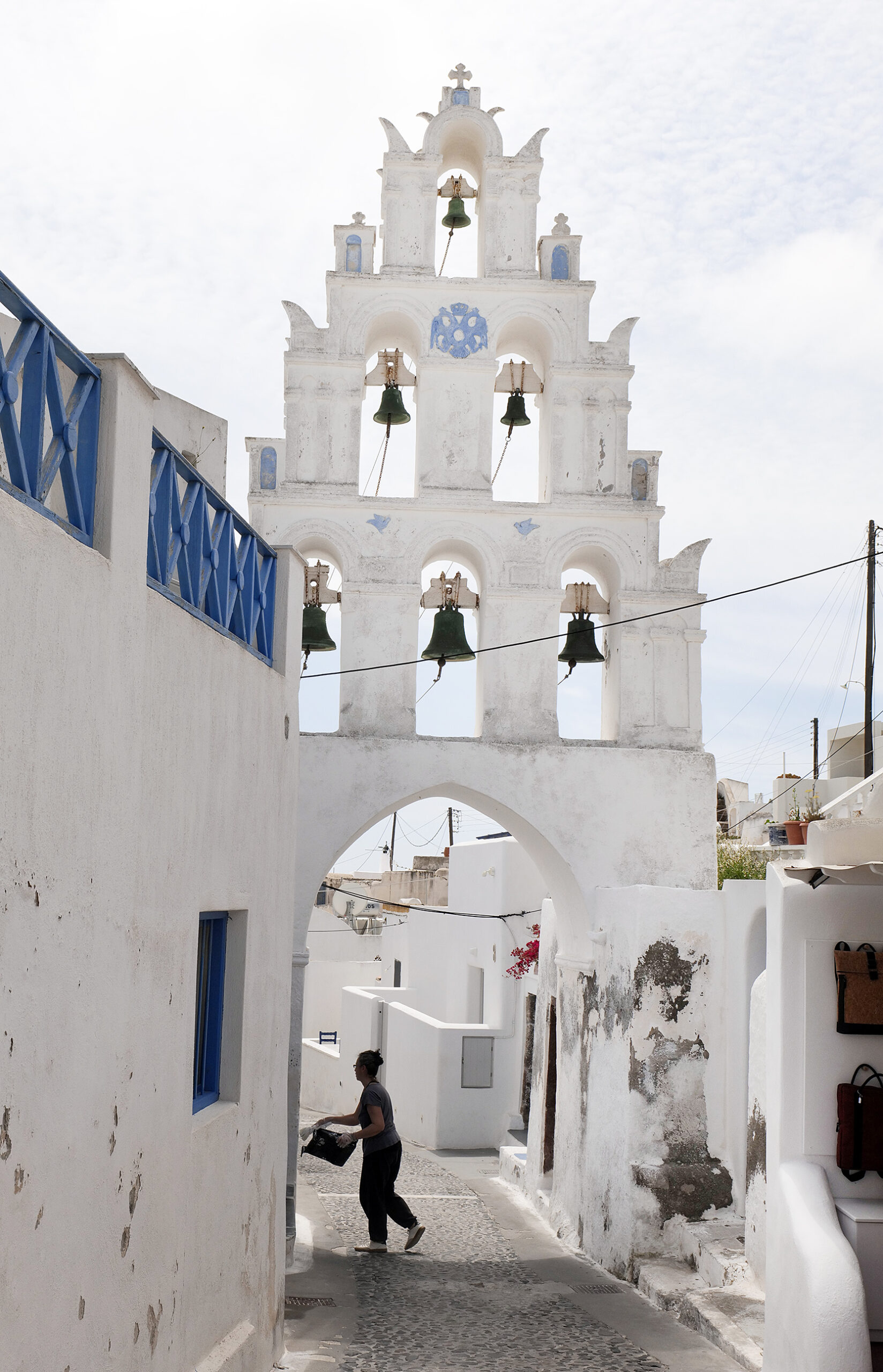

You leave Megalochori’s café not saying goodbye, but promising to return—a promise eagerly kept as you stroll downhill towards iconic village landmarks. These include remarkable bell towers like the Zoodochos Pigi Church or the stunning pyramid-shaped arch with six bells arranged across three levels, surely among the most impressive sights of Santorini’s lesser-known side.
Wandering aimlessly through sun-drenched cobblestone alleys, you’ll reach vivid blue or pristine white domes and the majestic Church of Agii Anargyri, named prominently on its twin bell towers visible throughout the village. Such sights, along with the intricate wooden-carved iconostasis of Panagia Trani Church, old Russian icons from Odessa, and the post-Byzantine calendar with 365 saint miniatures (one for each day), define Megalochori’s stunning architectural heritage. The nearby small square hosts enthusiastic village-wide festivals, including the raising of Lazarus before Palm Sunday, one of Santorini’s most eagerly awaited Easter traditions.
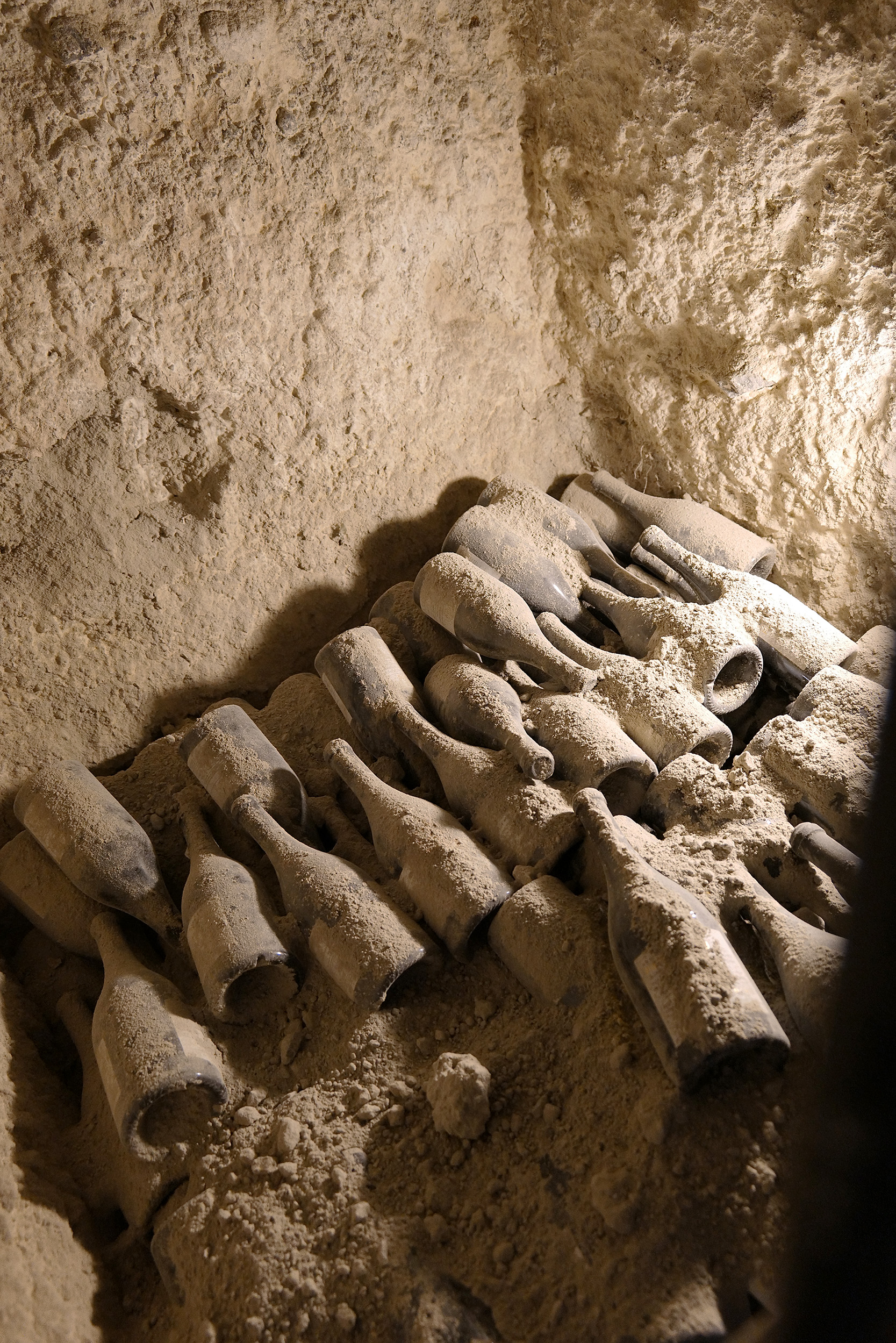
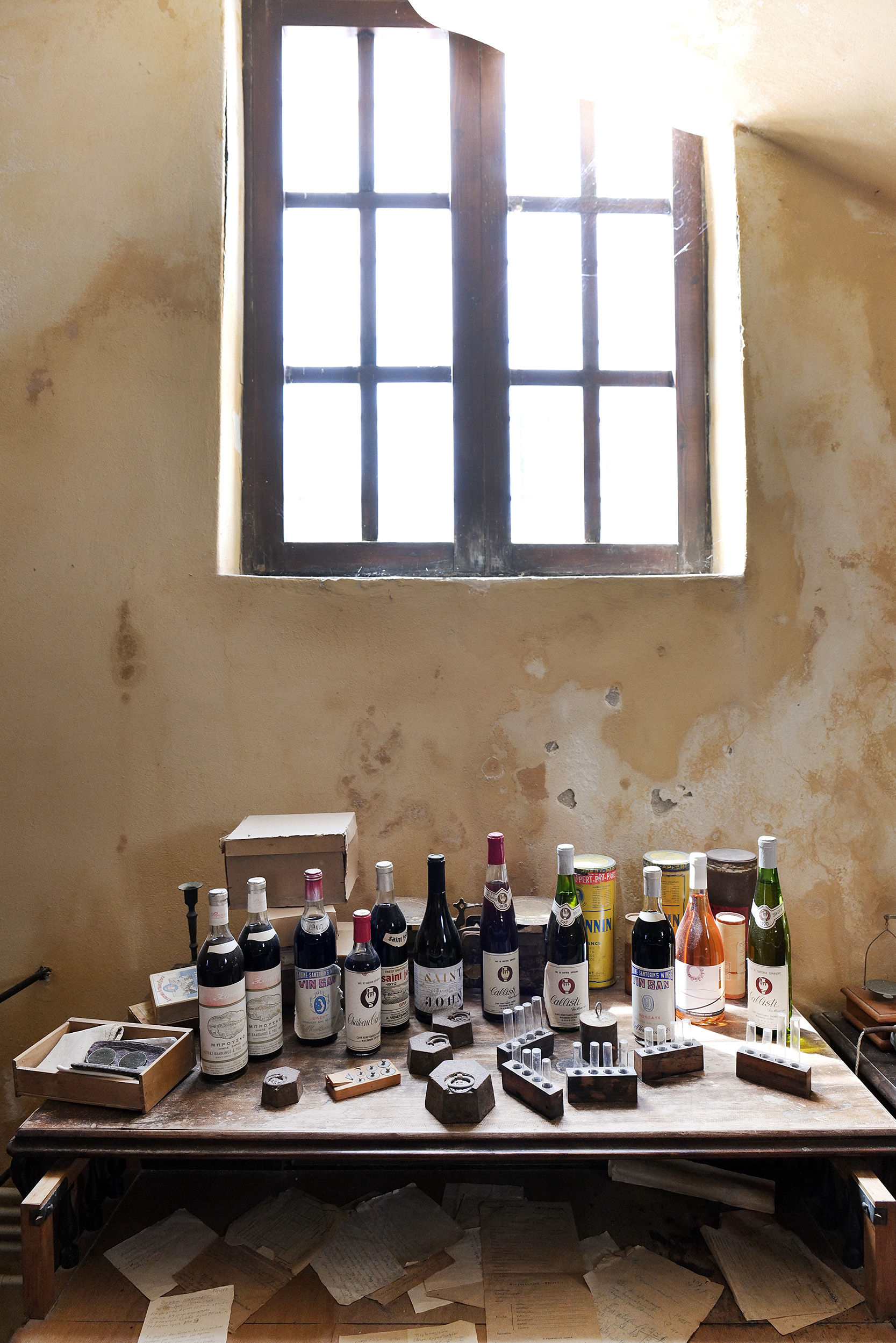
At Venetsanos, above Athinios Bay, constructed by the family in 1949, tastings occur across four breathtaking levels. Amid vaulted museum spaces and stone-hewn tunnels, tables bathed in sunlight overlook the breathtaking caldera, perfect for savoring the complex flavors of Assyrtiko, understanding the origins of Nychteri, being surprised by a semi-dry rosé, or leisurely sipping sweet Vinsanto paired perfectly with culinary bites.
At Gavalas, tastings unfold in picturesque courtyards or rooftop terraces amid modern winemaking facilities juxtaposed with traditional stone cellars and grape presses. Here, visitors delve into the story of one of Santorini’s oldest winemaking families, whose five generations passionately preserve and revive rare indigenous grape varieties like Katsano, Mavrotragano, and Voudomato.
Yet, while Megalochori’s architecture initially captivates, the two village wineries elevate your exploration by showcasing the unique qualities of Santorini’s volcanic vineyards and wine heritage. Venetsanos and Gavalas wineries, esteemed representatives of Santorini’s wine culture, offer immersive tastings.
The Unique Cultural Center
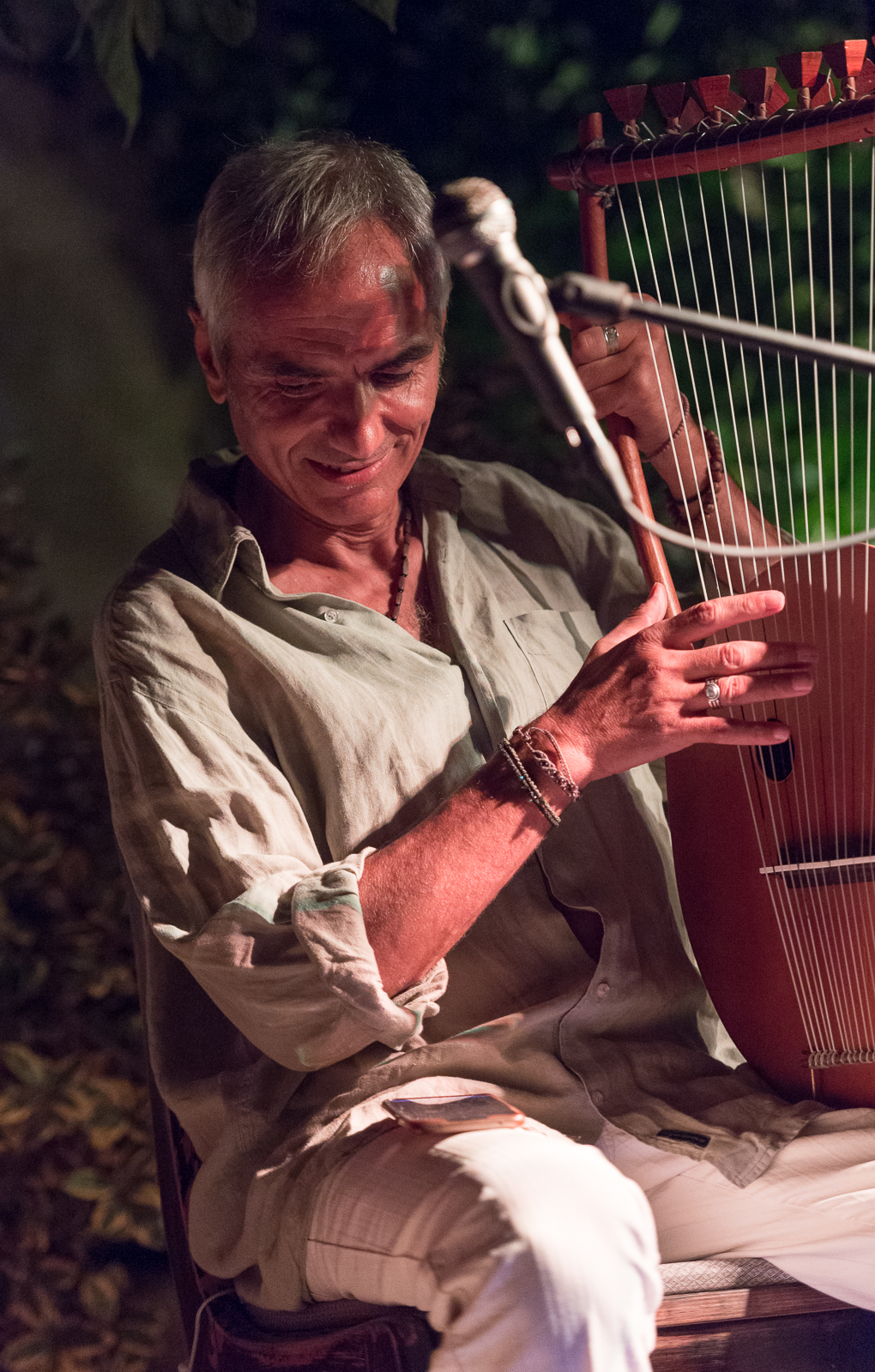
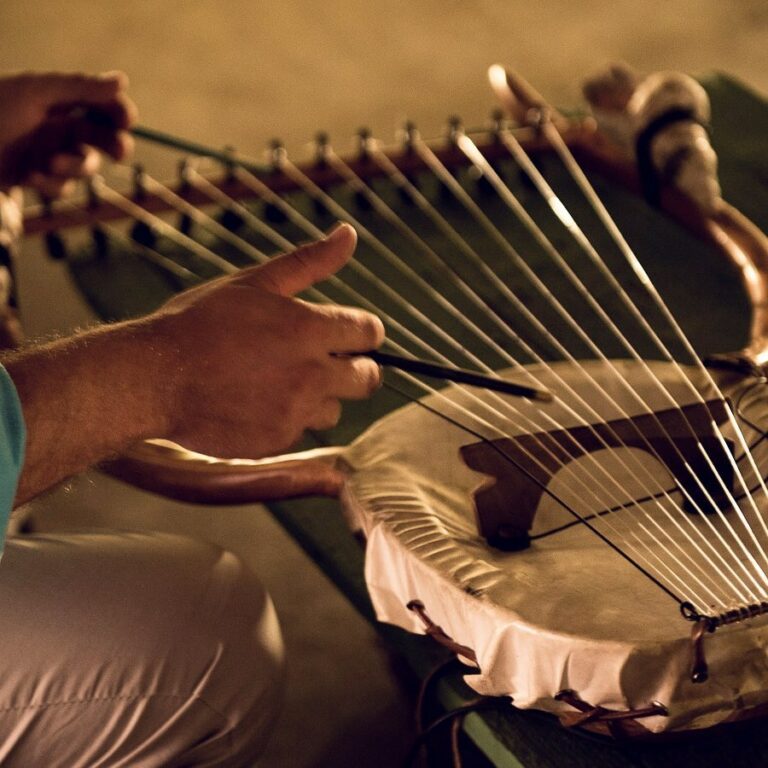
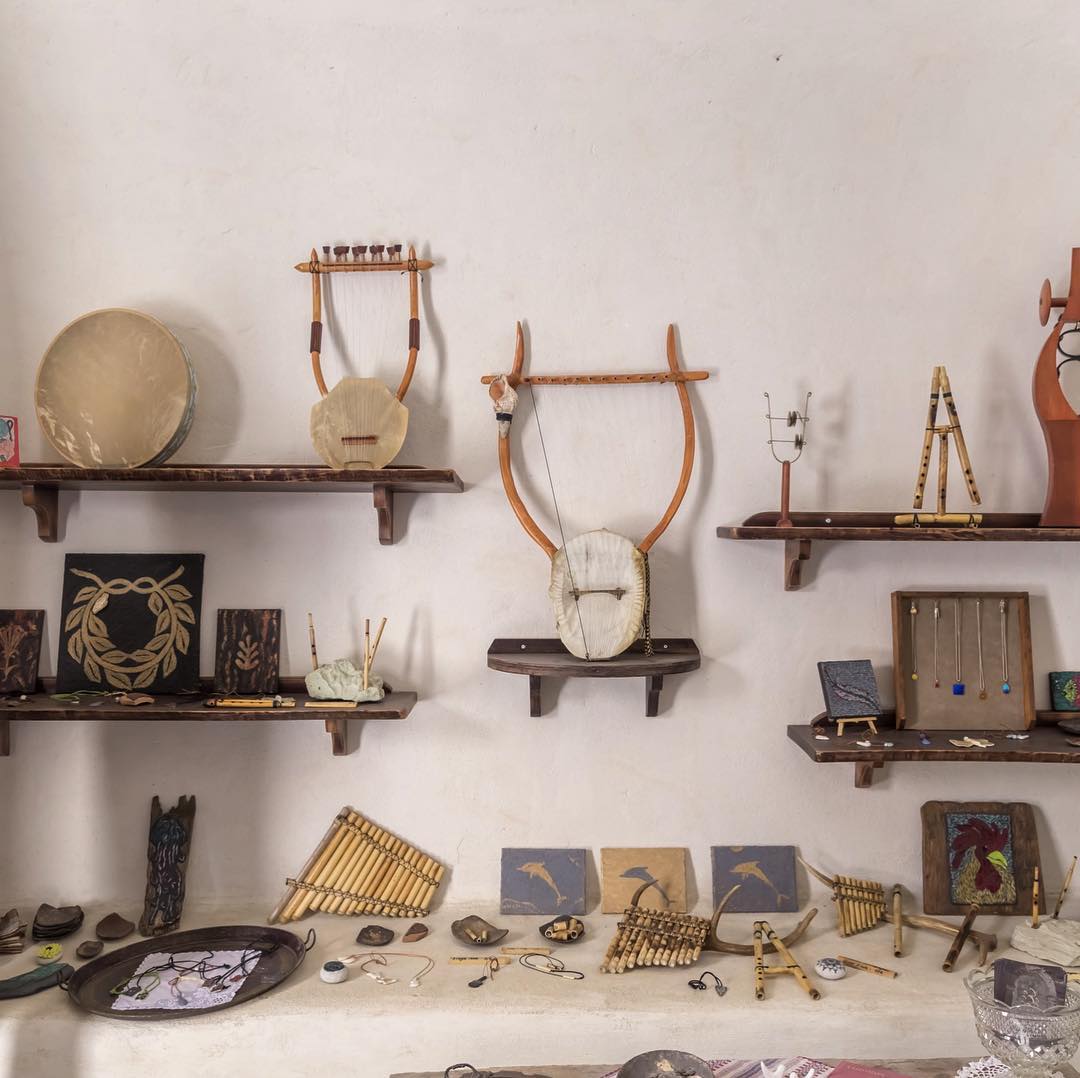
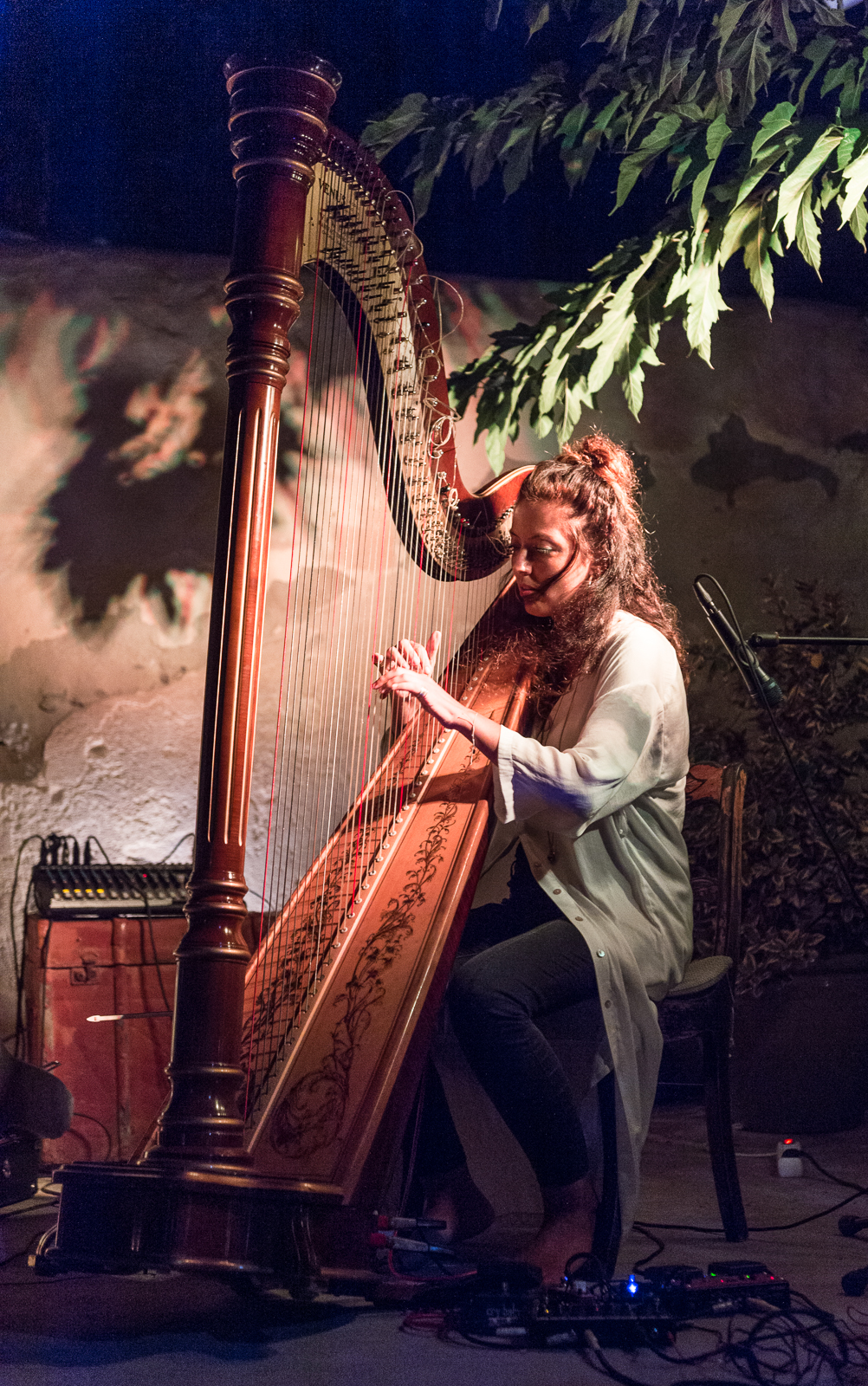
Hidden within Megalochori’s narrow streets, a former winery now houses the Symposion Cultural Center, a dynamic cultural space where music, mythology, art, and history blend uniquely. Created by musician and instrument-maker Giannis Pantazis and his wife, this multipurpose center exhibits ancient musical instruments, hosts workshops, and offers diverse artistic performances.
In this stunning vaulted cellar, guests experience forgotten sounds, experiment with crafting flutes, explore historic texts in the tiny vaulted library, view a photographic exhibit detailing the building’s former life as a wine storage space, and enjoy serene summer evenings with a glass of Santorini wine amid a charming mini botanical garden. Such intimate, unforgettable experiences define why this modest Santorini village truly earns the name Megalochori—meaning “large village.”
Read more:



